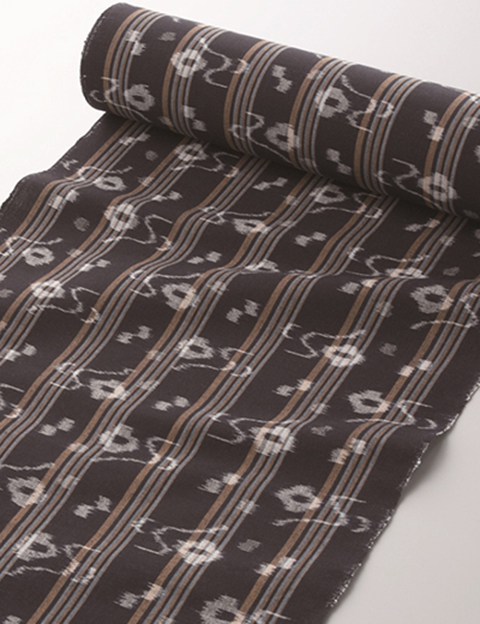YUMIHAMA Gasuri (Ikat)

The cultivation of cotton for home use on the sandy soil in Yumigahama, western Tottori Prefecture started in the latter half of the 17th century. When wholesalers of the indigo balls used for dyeing were established in the middle of the 18th century, cotton production for cloth increased.
Then at the beginning of the 19th century, women on the farms in Yonago and Yumigahama started weaving a picture ikat called hamanome-gasuri.
As a cloth that was first woven for garments for personal use by farming families, it has a simple and honest quality. While picture ikat techniques are utilized to create patterns associated with everyday life, bringing the wearer good luck, good fortune and warding off any evil spirits, the designs are bold. This fabric is used for kimonos as well as for cushion covers, curtains and bags.
Feature
Yumihama Ikat has a rough, rustic texture which points to its origin as clothing for farmers. They are adorned with bold and delicate patterns that bring good luck, ward off evil and are auspicious, as well as patterns related to daily living made using pictorial kasuri techniques.
How to make
After impurities have been removed from the raw yarn, about 80 strands are arranged parallel to each other and the portion to be patterned is tied and dyed. After the strands have been dyed and allowed to dry, once the tying yarn is removed, the portion that had been tied will remain white. By dividing the 80 threads one by one, and weaving them in combination with the white threads, it is possible to create different patterns.

